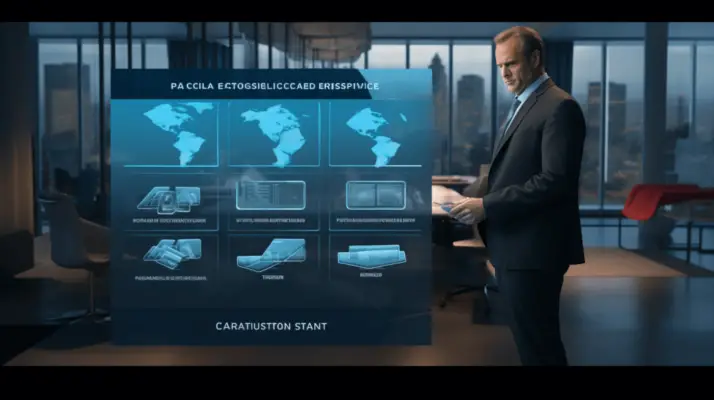Foreign material risk assessment ensures food products’ safety and quality. It involves the systematic evaluation of potential risks associated with the presence of foreign materials in food production processes.
This article aims to provide a comprehensive overview of foreign material risk assessment, including its definition, stages at risk, potential risks of foreign materials in food products, and establishing a foreign material control program.
The information presented herein will serve as a valuable resource for professionals in the food industry, regulators, and researchers involved in ensuring the safety and quality of food products.

What is Foreign Material Risk Assessment
Foreign material risk assessment is a process used to understand and evaluate the presence of foreign materials in food products.
It involves analyzing the potential sources of foreign materials, such as packaging materials, equipment, and raw ingredients, and assessing the likelihood and severity of their presence in the final product.
This assessment is crucial for ensuring food products’ safety and quality and implementing appropriate control measures to prevent contamination.
Understanding Foreign Material in Food Products
Understanding the presence of foreign materials in food products requires a comprehensive analysis of potential contaminants and their impact on consumer safety.
Foreign materials, also known as foreign bodies, pose significant food safety hazards, ranging from physical objects such as glass, plastic, or metal fragments to biological contaminants like insects or mold.
Foreign objects can enter the production process at various stages, including during the sourcing of raw materials or through contamination during processing and packaging.
The potential risk and severity of foreign material contamination depend on factors such as the foreign object’s type and size, the product’s nature, and the production environment.
To mitigate the risk of foreign material contamination, food manufacturers employ various preventive measures, including metal detection systems, sieving, and visual inspections, to ensure the safety of finished products and protect consumers from potential harm.
Identifying Stages at Risk
This will focus on identifying stages at risk in foreign material risk assessment, specifically in relation to raw materials, production processes, and finished products.
Raw materials are often the starting point for foreign material contamination and can introduce potential risks into the production process.
Production processes also pose risks, as foreign materials can be introduced during handling, processing, or packaging.
Finally, finished products are at risk as they may contain foreign materials not detected or removed during production.
Raw Materials
Raw materials play a crucial role in the foreign material risk assessment process as they are the primary sources of potential contaminants in the final product.
The presence of foreign materials such as metal or other objects in consumer goods can pose serious health risks and damage a company’s reputation. Therefore, it is essential to analyze the raw materials used in production thoroughly.
A comprehensive foreign material control program should be implemented to ensure the final product’s safety. This program should include a detailed analysis of the raw materials, identifying potential sources of physical hazards.
Additionally, the manufacturing process should be closely monitored to prevent the introduction of foreign materials.
The sources of potential contaminants can vary depending on the nature of the raw materials. For example, the sources in a food processing plant may include metal fragments from processing equipment or packaging materials.
Identifying these sources and implementing appropriate controls, companies can minimize the risk of foreign material contamination and ensure the production of safe consumer goods.
Production Processes
The optimization of production processes is crucial for ensuring the integrity and quality of the final product. In food safety management systems, conducting a thorough risk assessment is necessary to identify and mitigate the risk of contamination throughout the production stages.
This risk analysis procedure involves evaluating the potential foreign body hazards that may arise during production processes. One common source of foreign material contamination is conveyor belts, which can inadvertently introduce foreign objects into the food product.
Companies have implemented foreign object detection algorithms to address this concern to identify and remove foreign materials from the production line.
Continuous monitoring and improving production processes, manufacturers can minimize the risk of foreign material contamination and ensure the safety of their products.
| Stages at Risk | Foreign Material Hazards | Risk Mitigation |
|---|---|---|
| Raw Material Handling | Implement strict quality control measures for packaging materials, and ensure proper storage conditions | Implement strict quality control measures for incoming raw materials |
| Mixing and Blending | Introduction of foreign objects from equipment or improper handling | Regular inspection and maintenance of equipment, adherence to proper handling procedures |
| Cooking and Heating | Contamination from tool fragments or foreign objects in processing equipment | Regular inspection and maintenance of equipment, use of proper cooking and heating techniques |
| Packaging and Storage | Introduction of foreign objects from packaging materials or improper storage conditions | Implement strict quality control measures for packaging materials, and ensure proper storage conditions. |
Finished Products
This step is vital in maintaining food safety standards and preventing foreign material contamination. Foreign material can be defined as nonanimal objects present in food that may pose a consumer risk.
The occurrence of such contaminants can have severe consequences for both public health and the reputation of the food industry.
Various measures are implemented to mitigate this risk, including using metal detectors to identify and remove foreign objects. Additionally, root cause analysis is conducted to identify common sources and potential sources of contamination.
Thoroughly analyzing and addressing these issues, the food industry can ensure the production of safe and high-quality finished products.
Potential Risks of Foreign Materials in Food Products
These risks include the presence of physical hazards such as sharp objects and metal pieces, which can pose a serious threat to consumer safety.
Contamination with bacteria, viruses, and pathogens is also a concern, as it can lead to foodborne illnesses.
Additionally, foreign materials can include allergens and intolerances, which can cause adverse reactions in individuals with specific dietary restrictions.
Other potential risks include the presence of unpleasant tastes or aromas, discolorations, and textural changes, which may indicate spoilage or deterioration of the food product.

Physical Hazards such as Sharp Objects and Metal Pieces
Sharp objects and metal pieces pose a significant physical hazard in the context of foreign material risk assessment.
These hazards can be found in various forms, such as broken tools, metal fragments, or wire pieces. When present in food products, they can cause serious injuries to consumers, making it crucial to address these risks in food safety protocols.
To illustrate the potential dangers, imagine the following scenarios:
- A consumer unknowingly bites into a piece of sharp metal while eating a dry food product, resulting in a laceration to their mouth.
- Metal fragments from equipment used during food processing contaminate a batch of nonferrous metal-containing food, posing a risk of foreign body contamination.
- Over time, metal wear from machinery used in food production can result in metal pieces in the final product, requiring a robust foreign object management program to mitigate the risk.
The presence of sharp objects and metal pieces in food products highlights the importance of thorough risk assessment and the implementation of effective measures to prevent foreign object contamination.
Contamination with Bacteria, Viruses, and Pathogens
Contamination with bacteria, viruses, and pathogens presents a significant concern in food safety. The presence of these microorganisms in food products can lead to severe health risks for consumers.
Hazard analysis and critical control point (HACCP) systems are implemented in the food industry to prevent and control such contamination. Food processing practices, including proper handling, storage, and cooking techniques, are essential in reducing the risk of microbial contamination.
Quality management systems, such as Good Manufacturing Practices (GMPs) and Standard Operating Procedures (SOPs), are crucial in maintaining a safe and hygienic environment throughout the food production.
Regular monitoring, testing, and sanitation protocols are essential to ensure food products are free from harmful bacteria, viruses, and pathogens.
Adherence to strict food safety protocols can minimize the risk of contamination, safeguarding public health and maintaining the integrity of the food industry.
Allergens & Intolerances
Allergens and intolerances pose a significant concern in food safety, as they can potentially cause adverse reactions in individuals with specific dietary restrictions or sensitivities.
To address this concern, food safety experts focus on identifying and managing allergens and intolerances in food production. Here are four important considerations related to allergens and intolerances:
- Identification of allergenic food types: Food safety experts categorize certain foods as common allergens, such as peanuts, tree nuts, milk, eggs, fish, shellfish, wheat, and soy. These ingredients are more likely to cause allergic reactions and must be clearly labeled on food packages.
- Consumer complaints and potential hazards: Food manufacturers must take consumer complaints seriously, as they can indicate a potential allergen-related issue. Prompt investigation is necessary to prevent harm to consumers with allergies or intolerances.
- Control during production stages: Stringent control measures are implemented during food production to prevent cross-contamination with allergens. This includes separate production lines, proper cleaning procedures, and allergen testing.
- Foreign body detection and physical contamination: Allergens can also be introduced through physical contamination, such as when foreign bodies come into contact with food. Effective foreign body detection methods are crucial to prevent allergen-related incidents.
Managing allergens and intolerances is essential to ensuring food safety. It involves identifying allergenic food types, prompt responses to consumer complaints, control measures during production, and preventing physical contamination.
Unpleasant Tastes or Aromas
Unpleasant tastes or aromas can significantly impact the overall sensory experience of a food product, potentially leading to consumer dissatisfaction and decreased sales.
Therefore, food industry businesses must address this to maintain customer satisfaction and ensure food safety.
Unpleasant tastes or aromas in food products can result from various factors, including poor food control during manufacturing processes, improper food quality evaluation, and inadequate food safety and sanitation practices.
It is also important for food handlers to have extensive knowledge about the potential sources of unpleasant tastes or aromas and implement appropriate measures to prevent their occurrence.
Failure to address this issue can lead to financial losses and pose health risks to consumers. Moreover, the safety of street food should also be considered, as it may be more susceptible to foreign material risks and unpleasant tastes or aromas due to less stringent controls.
Identifying and mitigating the sources of these sensory defects, food industry businesses can reduce food waste, improve consumer satisfaction, and enhance overall product quality.
Discolorations & Textural Changes
Discolorations and textural changes are important factors in foreign material risk assessment within the food industry. These abnormalities can indicate the presence of physical contaminants, which can pose serious health risks to consumers.
Identifying and addressing such issues is crucial in maintaining high safety and quality throughout the processing chain.
Contaminant detection equipment is essential in accurately classifying and removing potential contaminants. Additionally, waste stream analysis can provide insights into plant hygiene practices’ effectiveness and identify improvement areas.
This is particularly relevant in the meat industry, where the potential for foreign material contamination is higher due to the nature of the product.
Implementing comprehensive measures to detect and prevent discolorations and textural changes, the food industry can ensure the delivery of safe and satisfactory products to consumers.
Establishing a Foreign Material Control Program
This will discuss the key points of evaluating current manufacturing processes and procedures and developing a systematic method for identifying and mitigating foreign materials (FM) in food products.
Evaluating current manufacturing processes and procedures is essential to identify any potential loopholes or weaknesses that may contribute to the presence of foreign materials in food products.
This evaluation can help identify areas for improvement and implement necessary changes to minimize the risk of FM contamination.
Developing a systematic method for identifying and mitigating FM involves implementing a comprehensive system that includes regular inspections, employee training, and quality control measures to detect and prevent foreign materials in food products.
This systematic approach ensures that all necessary steps are taken to maintain the highest level of food safety and minimize the risk of consumer harm.
Evaluating Current Manufacturing Processes & Procedures
To assess the risk of foreign material contamination, evaluating the current manufacturing processes and procedures objectively and impersonally is important. This evaluation allows the food company to identify potential areas of vulnerability and implement necessary control measures.
The food industry recognizes that foreign material contamination can occur at various stages of production, from raw material handling to packaging. Examining each step in the manufacturing process gives a comprehensive understanding of the potential risks.
A useful tool for this assessment is a table that compares the current processes and procedures with industry standards and best practices. This table should include five rows, each representing a different aspect of the manufacturing process, and two columns, one for the current practices and one for the desired practices. B
Comparing the two, the food company can identify areas that need improvement and develop strategies to mitigate the risk of foreign material contamination.
This level of knowledge and analysis is crucial to prevent unintentional contamination and intentional sabotage, which can hurt the company’s reputation and bottom line.
An effective foreign material control program should include prerequisite programs such as good manufacturing practices and proper employee training to ensure a proactive approach to minimizing contamination risks in food processing enterprises.
Developing a Systematic Method for Identification & Mitigation of FM’s
To effectively address the issue of foreign material risk assessment within the food industry, it is crucial to develop a systematic method for identifying and mitigating foreign materials (FM’s).
This systematic approach ensures that potential risks are thoroughly evaluated and appropriate measures are implemented to prevent the occurrence of FM’s in food products.
The process begins with a comprehensive assessment of the current manufacturing processes and procedures, allowing for a detailed understanding of potential sources and pathways for FM contamination.
By utilizing this information, a systematic method can be developed, including identifying critical control points and implementing appropriate monitoring and control measures.
This approach enhances food safety assurance and facilitates the management of foreign objects in food, ultimately reducing the overall risk of FM contamination.
Frequently Asked Questions
What are the common types of foreign materials found in food products?
Common foreign materials in food products include physical contaminants like glass, metal, plastic, and stones and biological contaminants such as bacteria, viruses, molds, and insects.
These materials pose potential health risks to consumers if ingested.
How can foreign materials in food products pose a risk to consumer health?
Foreign materials in food products can risk consumer health through physical injury, choking, allergic reactions, and the introduction of harmful bacteria or toxins. These risks can lead to serious health issues and even death.
What are the food industry’s legal regulations and standards regarding foreign material control?
Legal regulations and standards regarding foreign material control in the food industry aim to ensure consumer safety.
These regulations include guidelines on prevention, detection, and control measures and establishing acceptable limits for foreign materials in food products.
How can a company effectively implement a foreign material control program?
To effectively implement a foreign material control program, a company should start by conducting a comprehensive risk assessment, identifying potential sources of foreign material, implementing preventive measures, establishing robust inspection procedures, and providing employee training on proper handling and reporting of foreign material incidents.
What are some best practices for regularly inspecting and monitoring foreign materials in food production facilities?
Best practices for conducting regular inspections and monitoring for foreign materials in food production facilities include implementing a comprehensive inspection plan, training employees on identification and reporting procedures, utilizing technology for detection, and maintaining clear documentation of findings.

Conclusion
Conducting a foreign material risk assessment is crucial in the food industry to ensure the safety and quality of products.
Companies can establish a comprehensive foreign material control program by identifying the stages at risk and potential risks associated with foreign materials.
This program will help prevent contamination and protect consumers from potential hazards.
Implementing thorough control measures, such as proper equipment maintenance and employee training, is essential in mitigating the risks posed by foreign materials in food products.

Chris Ekai is a Risk Management expert with over 10 years of experience in the field. He has a Master’s(MSc) degree in Risk Management from University of Portsmouth and is a CPA and Finance professional. He currently works as a Content Manager at Risk Publishing, writing about Enterprise Risk Management, Business Continuity Management and Project Management.

